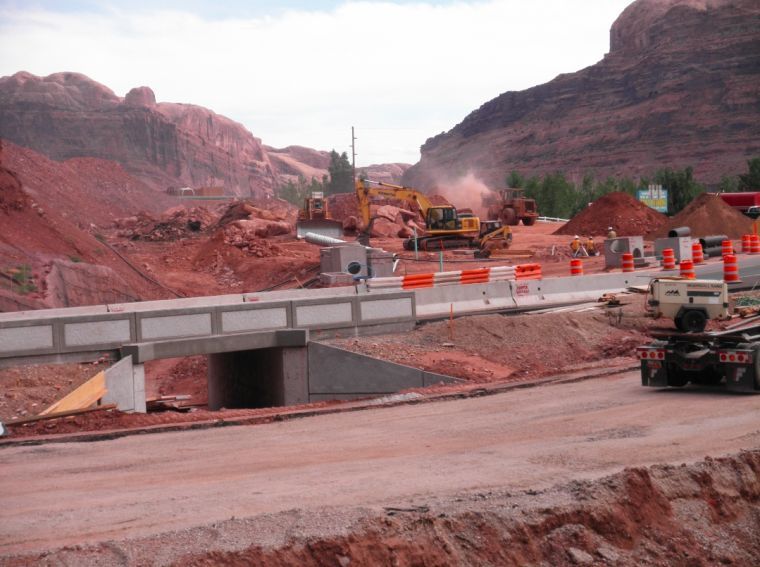The City of Moab submitted a grant application which, if accepted, would secure funding for the final phases of the Lions Park Scenic Byways Trail Hub. The $1.36 million Utah Access Program grant would provide funding from the Federal Lands Access Program.
“It’s been pretty intense these last few days getting everything done,” Rebecca Andrus, Moab’s city engineer, said of the grant writing process. “Essentially the purpose is to connect to federal lands.”
A range of individuals and government agencies have assisted in preparing parts of the grant application. Andrus, David Olsen, Moab’s community development director, and Kim Schappert, the director of Moab Trails Alliance, have been the principal authors.
The Lions Park Scenic Byways Trail Hub is on the north side of the intersection of State Route 128 and Hwy 191.
The idea is to have the trail hub as the central nexus from which non-motorized traffic can access the North Moab Recreation Area Alternative Transportation Project, Schappert said.
“It’s the central location for the whole alternative transportation system. It gives people a center to go and expand out to all the public lands in the North Moab Recreation Area,” she said.
The Lion’s Park Trail Hub will connect pedestrians and bicyclists to more than ten miles of paved trail that never crosses traffic, a bike lane that extends to Dead Horse Point State Park and Canyonlands National Park, as well as to a plethora of mountain bike trails.
The trail hub will include parking, restrooms, a water feature, water filling stations and a cooling pavilion. In the future play areas and volleyball courts are planned.
Across the highway from the trail hub to the south is the transit hub, which has been under construction since October 2012. Schappert was able to find funding for the transit hub and the Colorado River Pathway along SR 128 through the Paul S. Sarbanes Transit in Parks Program. When completed it will include 43 parking spaces and a shuttle loading and unloading area, as well as restrooms and shade structures.
The transit and trail hubs will be connected by a 60-foot long pedestrian and cyclist underpass beneath SR 128.




